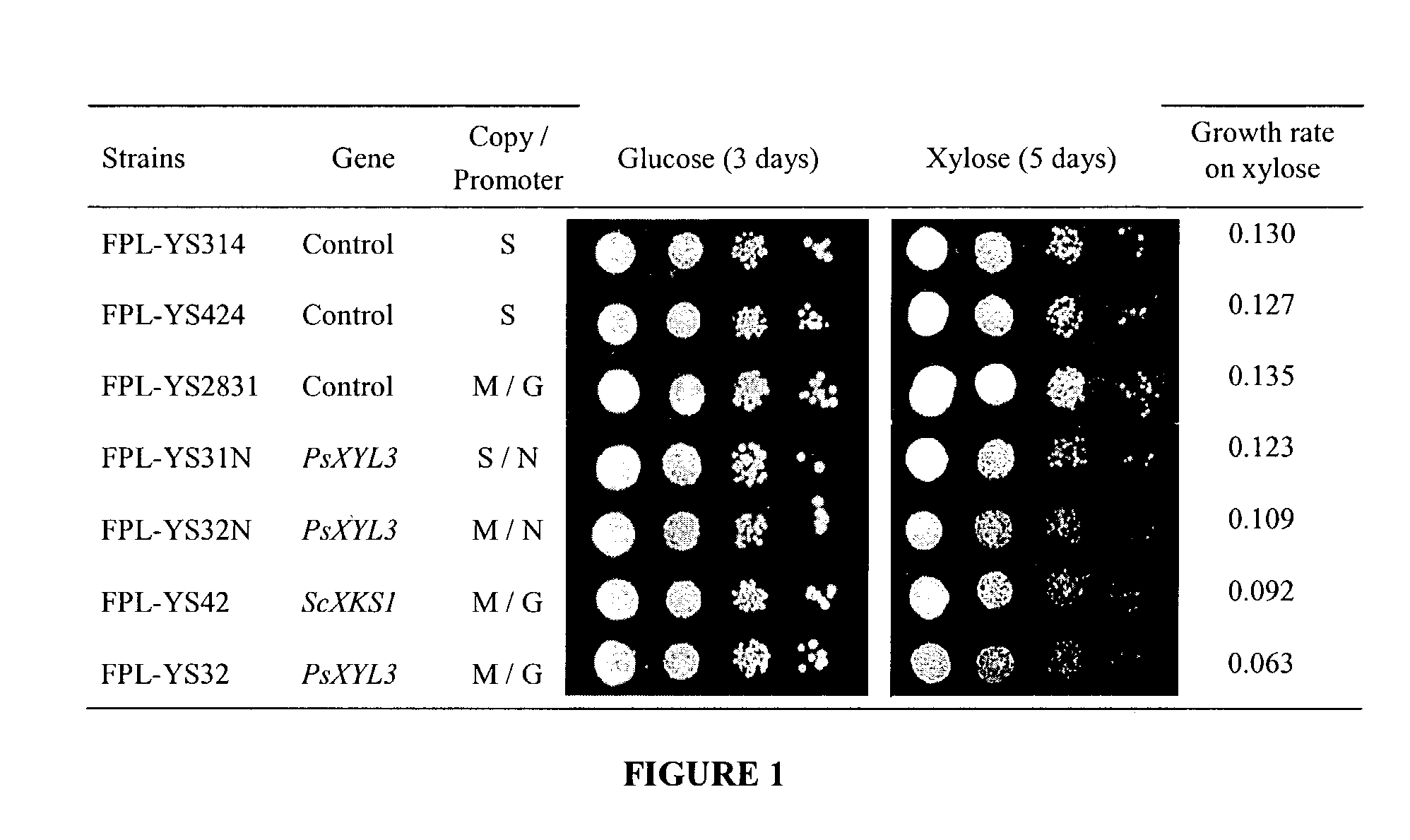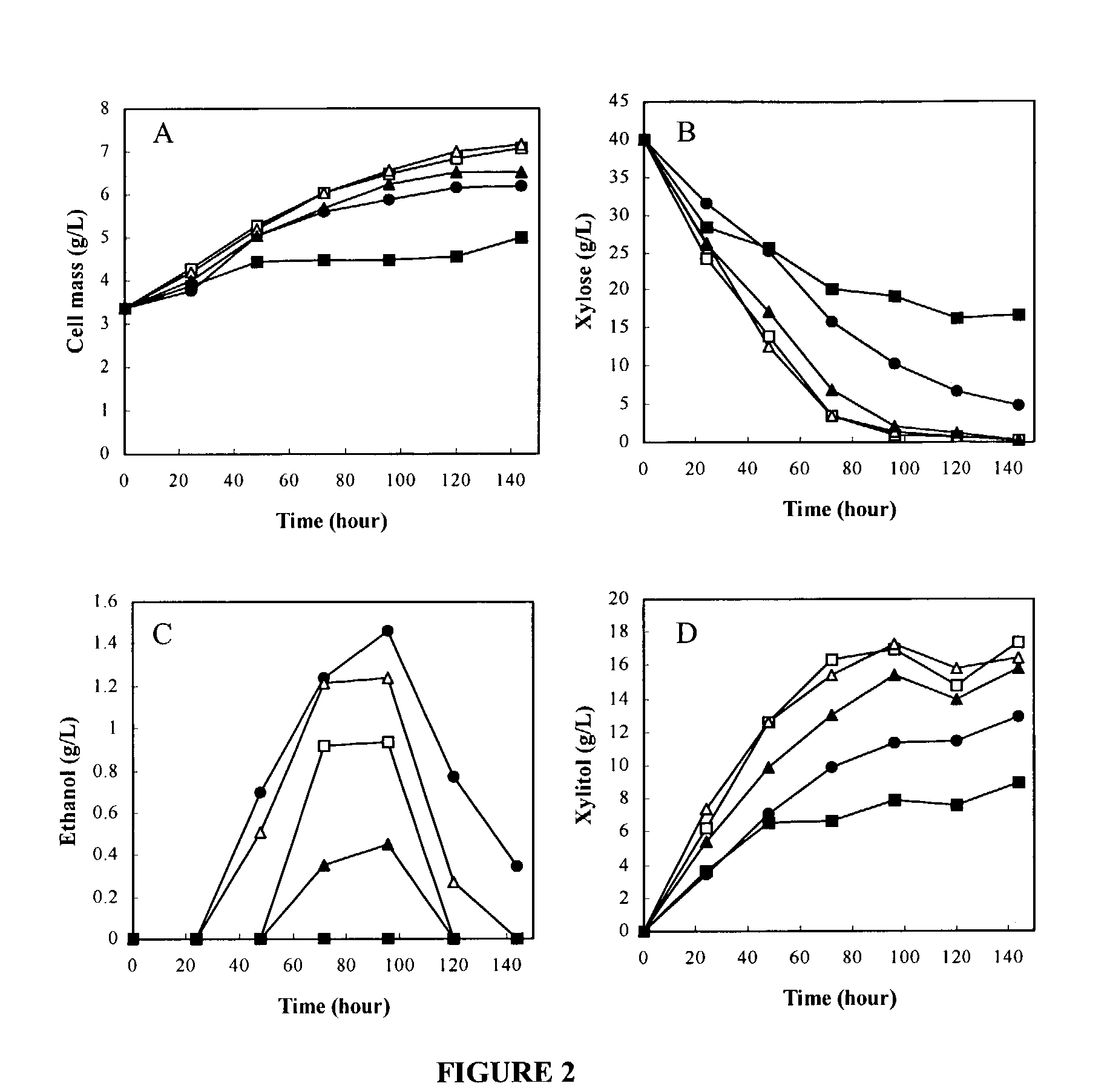Xylose-fermenting recombinant yeast strains
a technology of recombinant yeast and xylose, which is applied in the direction of enzymology, transferase, instruments, etc., can solve the problems of low ethanol production level, low yield, and inability to make large-scale ethanol production economically feasible using these bacteria
- Summary
- Abstract
- Description
- Claims
- Application Information
AI Technical Summary
Benefits of technology
Problems solved by technology
Method used
Image
Examples
examples
Methods and Materials
[0055]Strains and Plasmids.
[0056]Microbial strains and plasmids used in this study are listed in Table 1. Saccharomyces cerevisiae L2612 (MATα leu2-3 leu2-112 ura3-52 trpl-298 can1 cyn1 gal+) and plasmid, pY2XK were provided by Prof. Jin-Ho Seo, of Seoul National University. The neor based Ty-δ tunable expression vector, pITy4 was provided by Prof. Wirttrup, of MIT (Parekh et al., 1996). Escherichia coli DH5α (F− recA1 endA1 hsdR17 [rK−mK+] supE44 thi-1 gyrA relA1) (Gibco BRL, Gaithersburg, Md.) was routinely used for gene cloning and manipulation.
[0057]Media and Culture Conditions.
[0058]Yeast and bacterial strains were stored in 15% glycerol at −70° C. E. coli was grown in Luria-Bertani (LB) medium. When required, ampicillin (50 μg / ml) was added to the medium. Yeast strains were routinely cultivated at 30° C. in YP medium (10 g / L yeast extract, 20 g / L Bacto Peptone) with 20 g / L glucose (YPD), 20 g / L xylose (YPX-2%) or 40 g / L xylose (YPX-4%). YPD or YPX plus 20 ...
PUM
| Property | Measurement | Unit |
|---|---|---|
| pH | aaaaa | aaaaa |
| pH | aaaaa | aaaaa |
| pH | aaaaa | aaaaa |
Abstract
Description
Claims
Application Information
 Login to View More
Login to View More - R&D
- Intellectual Property
- Life Sciences
- Materials
- Tech Scout
- Unparalleled Data Quality
- Higher Quality Content
- 60% Fewer Hallucinations
Browse by: Latest US Patents, China's latest patents, Technical Efficacy Thesaurus, Application Domain, Technology Topic, Popular Technical Reports.
© 2025 PatSnap. All rights reserved.Legal|Privacy policy|Modern Slavery Act Transparency Statement|Sitemap|About US| Contact US: help@patsnap.com



